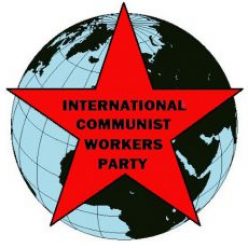
Solidarity with Boeing Strikers: Building for Communist Revolution
SEATTLE (USA), November 9 — “It takes more than giving a speech from the podium saying that you are with the strikers these last three months. It takes being with them in a real and concrete way. It takes seeing how to make a more effective struggle,” wrote “El Charro Mortal” after returning to Seattle from meeting striking Boeing workers in St. Louis. Workers in these plants make military aircraft and weapons systems.
As far as “El Charro Mortal” knew, he and his two friends from Chicago were the only rank-and-file Boeing workers who traveled to join the picket lines. About three thousand industrial workers were on strike.
He gave a more detailed report at a meeting of Boeing activists in the Industrial Action Committee. He wants to take another trip to St. Louis. He invited a member of the Committee and an ICWP comrade to come with him this time.
Political Preparation for Communist Solidarity
The agenda at the committee meeting included a history of industrial workers fighting for communist revolution.
The ICWP comrade began with a reminder of the genocide from Gaza to the Sudan and more. Massive demonstrations throughout Europe, dockworker strikes against the Gaza genocide, murder of Venezuelan workers building up to imperialist war and threats to go ‘guns-a-blazing” into Nigeria set the scene.
During the Boeing strike in Seattle last year, dozens of young workers worried about escalating war footing, the result of racism and fascism. Those striking workers enthusiastically took Red Flag. Many still read it.
Boeing workers and others working for IAM subcontractors have rallied to fight for thousands suffering deportation.
But what most excited members of the Boeing industrial committee was the history of the Putilov workforce in pre-revolutionary Russia.
In 1917, most Russian military weapons were made in the Putilov plants. Over 100,000 industrial workers not only produced these weapons but also brought them to the front lines where the communists fought for a new society. The workers showed the soldiers how to use these munitions and fought beside them.
Committee members, especially those who had just returned from St. Louis, took notes.
The committee had a chance to discuss the historical revolts that led to communist revolution. The need to crush Boeing and other imperialist war production became paramount to some committee members.
Others still hoped that socialism will save the day. But a society built on wage slavery and profits will never meet the needs of the working class.
Everyone was invited to the ICWP potluck on Nov. 22. It’s a good opportunity to secure relationships. And an even better opportunity to bring to light the contradictions between communism and socialism.
The visit to St. Louis opened the door. Our traveling friend learned something. It does take more than giving a speech from the podium. It takes being with industrial workers in a real and concrete way that leads to a more effective struggle.
Our party’s question is: How do we expand the communist struggle?
Persistent discussion with industrial workers is a must, whether at the factory gates, social events, or a committee meeting. As is Red Flag distribution at the plant gates. Collectives inside the factories will lead to concrete struggles to recruit and consolidate new members. During Trump’s first regime, many workers in the Boeing plant building where ICWP had a base stopped work to figure out how to fight the separation of families at the US/Mexico border.
Seattle comrades hope new communists and friends can bring their experiences here this spring.
War and fascism are here. Our party must bring communist ideas to factories worldwide. The political and social relationships we build today not only increase the struggle in the factory but can spread communist solidarity around the world.
See also Communism, not Unions, Will Liberate Us from Wage Slavery here

